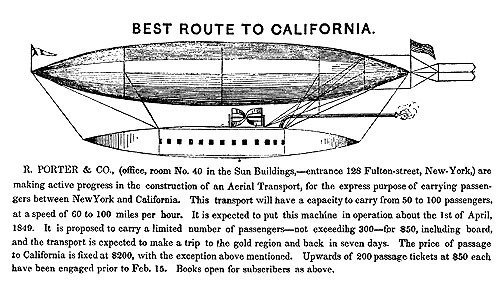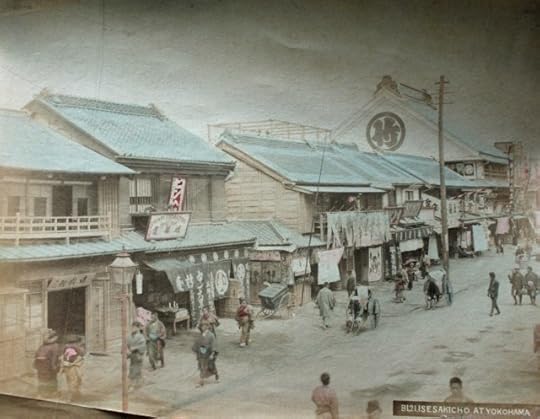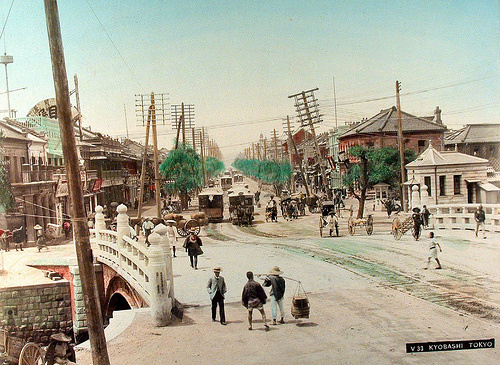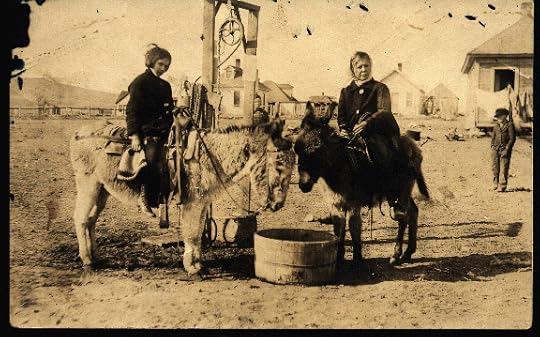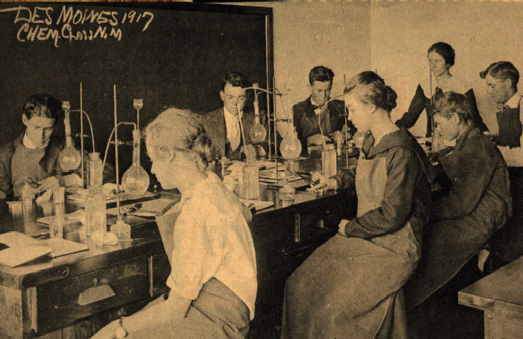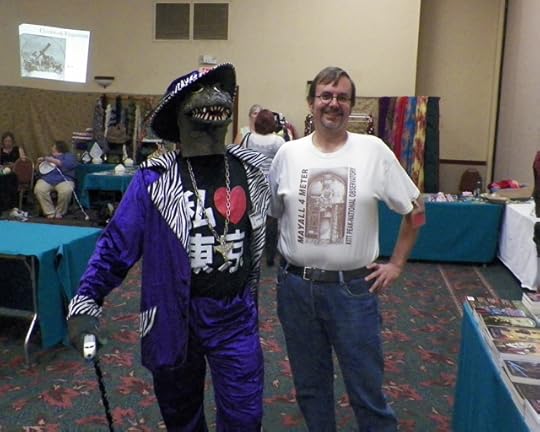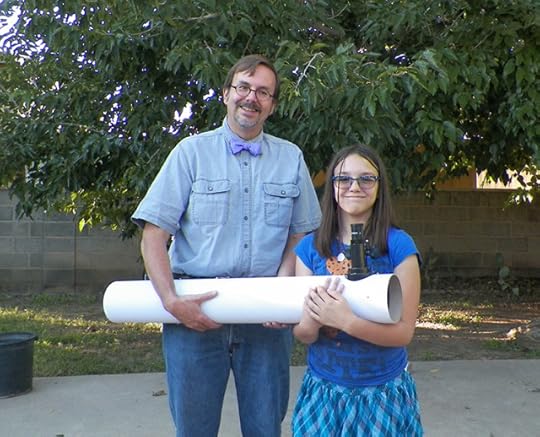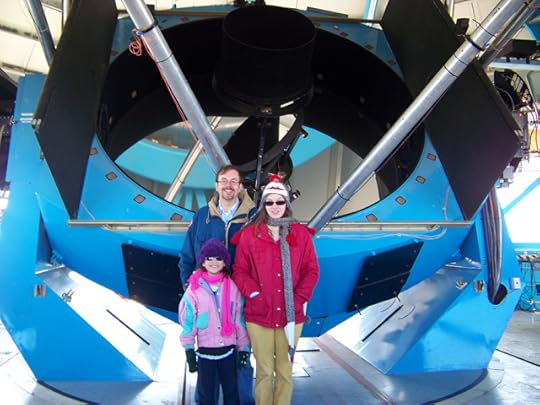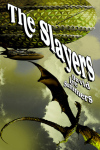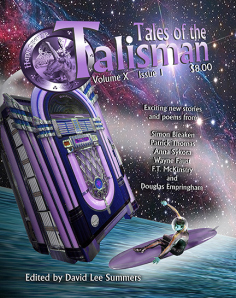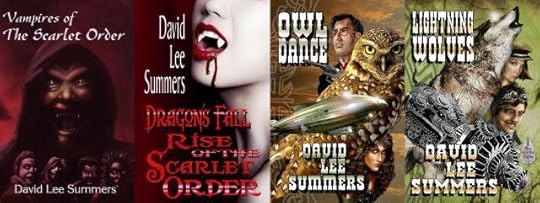David Lee Summers's Blog, page 107
November 29, 2014
San Francisco Airships
Frequent Tales of the Talisman contributor Douglas Empringham recently sent me a newspaper article detailing airships of the nineteenth century from California’s San Francisco Bay Area. You can read the complete text of the article at sfgate.com.
The first project the article mentions is one proposed by Rufus Porter in response to the California Gold Rush. Given the challenges of getting to the gold fields, he proposed creating an “Aerial Locomotive” that could carry passengers and cargo from California to New York.
The image above is from an 1849 pamphlet advertising his idea. As it turns out, Porter actually did complete a 700-foot long prototype of his design, but rowdy visitors tore open the hydrogen bag during a Thanksgiving Day display before it could be launched. The next person in the Bay Area to attempt to develop an airship was publisher and editor Frederick Mariott who built the Aviator Hermes Jr. You can read more about this airship and see some great images at http://www.flyingmachines.org/marav.html. There’s even a poem by Bret Harte written in honor of the airship!
What struck me about Mariott’s design, besides being very steampunk, is that it was propelled by four small alcohol-burning steam engines. These are very close to the kinds of steam engines I imagined for the Russian airships in my Clockwork Legion series. Of course, in reality, the alcohol-burning engines were a bit too heavy and a bit underpowered to be effective propulsion in the prevailing winds around San Francisco. In the Clockwork Legion series, the Russians overcome this largely by having larger gas bags that can lift slightly heavier and more powerful engines.
I hope you’ll take a moment to learn about my two Clockwork Legion steampunk novels Owl Dance and Lightning Wolves. I’m currently working on the third novel in the series, The Brazen Shark. Finally, speaking of Tales of the Talisman, the art director just delivered the autumn issue’s illustrations. I’ll be working on the layout this upcoming issue. Although this upcoming issue doesn’t have a story by Douglas, he will be back in the winter issue.

November 22, 2014
Tokyo, 1877
I’ve just spent an intense week working on the third novel in my Clockwork Legion series, The Brazen Shark. Many scenes I’ve written have been set in Tokyo of 1877. Like any city, Tokyo has its own personality but it’s a personality that has changed considerably in the last 137 years. I’ve been scouring the web for photos of Tokyo and its surrounding areas. Here’s one of my favorite, a public domain photograph of Yokohama in the 1880s.
What I like about this photo is how much the scene looks like many U.S. cities of the same period. There are wooden buildings, a gas lamp, and dirt streets. Of course, there are elements of this photo that seem very unique to Japan, such as the rickshaws and the banners hanging over the doors. I love how people are just going about their business, like the two guys on the right just chatting about some long forgotten subject. Some people are striding with purpose. Others are looking around.
Of course, one has to be careful when doing research on the web. Here’s another photo I like. This photo shows Kyobashi. According to Wikipedia, the photographer died in 1898 and this is supposed to be a nineteenth century street scene.
The problem is the streetcars. As far as I can tell from researching the Tokyo streetcar system, Tokyo and its surrounding areas didn’t get streetcars until 1901. Now, since The Brazen Shark is a steampunk novel, it’s tempting to allow this anachronism. However, one of the themes that’s emerging in the novel is the way in which Emperor Meiji’s “Restoration” was a transition from old feudal Japan to a new, modern vision of Japan. I do introduce scientists and inventors who want to bring this about, but I also want to show that they’re working in a city where this is all new and exciting. You might see some miraculous inventions in the Tokyo of my novel, but you won’t yet see an established transportation system that didn’t exist as early as 1877. Another possible anachronism is the guy in the straw hat in the lower left. That suit just says 1901 to me more than 1880!
Now, despite the fact that this photo has anachronisms, there are still things to be learned. Again, I see people walking and taking rickshaws through the streets. I see someone carrying baskets. I see horses and masonry buildings. As long as I keep in mind what would and wouldn’t be in this scene in the time period of my novel, the photo still serves as a tool to help me describe nineteenth century Kyobashi.
Speaking of science and exciting discoveries, it’s time for me to return to the observatory for a few days. In the meantime, you can start getting ready for The Brazen Shark by discovering the first two novels of the Clockwork Legion series. Click the link to see the books, read sample chapters and find out where you can buy them. Also, as we’re in the run up to Thanksgiving, this seems a great time to remind you that books make outstanding holiday presents. If you have read and enjoyed Owl Dance or Lightning Wolves and know someone who would like them, why not give one or both as a gift?


November 15, 2014
Windows into the Past
I enjoy looking at old family photos. It’s an opportunity to recall good memories and sometimes even get a glimpse of those relatives I wasn’t fortunate enough to know personally. Unfortunately, my maternal grandmother died during the Great Depression. My mom barely knew her own mother. Given that my grandmother died in the 1930s, it’s not surprising, most of the photos of her are portraits. Back in those days, few people went around shooting pictures with their cell phones! Still, I’m fortunate enough to have two candid photos of my grandmother as a girl and young woman.
My grandmother moved to the small town of Des Moines, New Mexico with her family before statehood. In the photo above, my grandmother is on the mule to the right. I’m guessing the photo was taken right around the time of New Mexico’s statehood. I wonder whether my grandmother was just out riding for fun, or if she was doing chores. To me, the photo looks like something right out of a Sergio Leone Western with the stark landscape, simple buildings, and even laundry drying. This next photo was taken only a few years later.
This is a photo of a chemistry class at Des Moines High School in 1917. My grandmother is the young woman second from the left. I enjoy the juxtaposition of these two photos. Remember, that chemistry lab is in the very same dusty small town where my grandmother was out riding on a mule.
Even though my grandmother grew up at the beginning of the 20th century, New Mexico was still very much part of the wild west, but even in the wild west, high schools had chemistry labs.  It’s just another one of the reasons I’m attracted to steampunk stories. It may seem fanciful to imagine mad science or incredible technology in Victorian times or the wild west, but in fact, it wasn’t so far from the story my family lived. My novel Owl Dance starts out in rural New Mexico, in a town not so different from the one my grandmother grew up in. The book is available at Amazon, Smashwords, and Barnes and Noble.
It’s just another one of the reasons I’m attracted to steampunk stories. It may seem fanciful to imagine mad science or incredible technology in Victorian times or the wild west, but in fact, it wasn’t so far from the story my family lived. My novel Owl Dance starts out in rural New Mexico, in a town not so different from the one my grandmother grew up in. The book is available at Amazon, Smashwords, and Barnes and Noble.


November 8, 2014
From Wolves to Sharks
I had a wonderful time at TusCon in Tucson, Arizona last weekend. I was on four good panels where we discussed topics as diverse as the benefits of a day job to your writing, whether the future is knowable or not, and the similarities and differences between monsters and megalomaniacs. Here I am in front of the Hadrosaur Productions table with Pimpzilla. I especially love his cane topped with train.
Although the dealer’s room at TusCon never seemed especially crowded, we had good sales. Of particular note, Lightning Wolves was quite popular and we sold out. This is especially welcome since my plan for November had been to focus on the novel’s sequel, The Brazen Shark.
If you would like to know a little more about The Brazen Shark and my writing process, I talk about both in a fun mini-interview with Wendy Rathbone.
Unfortunately, my work schedule at the observatory doesn’t really allow me to participate in the National Novel Writing Month. The nights in November get long, and I can’t guarantee I can write on nights I’m at the observatory. That said, two of my co-workers each offered to work a night for me this month. It’s only two nights, but it’s very welcome and gives me hope that I might get a word count similar to what I would if I were participating in NaNoWriMo.
As it turns out, I’m less concerned about word count than I am having quality time to do research. Much of The Brazen Shark is set in Russia and Japan of the nineteenth century. I have a lot of research to do for this novel. Of course, returning to my weekend at TusCon briefly, perhaps I could turn to my daughter for help. She won the costume contest in the science fiction category for her weeping angel costume from Doctor Who. The Weeping Angels send people back in time. Perhaps she can send me to Sakhalin Island of 1877!


November 1, 2014
Making a Telescope
One of my first forays into the world of astronomy happened when I was fourteen years old. I was at an age where people started wondering what I was going to do with my life and my dad had recently passed away. I went to a meeting of the Riverside Amateur Astronomers in California and went home with a twelve inch telescope mirror and a wooden tube to mount it in. My plan was to build a Newtonian telescope—a design pioneered by Isaac Newton, which has a large light-collecting mirror at the back of the telescope. In the front is a 45-degree mirror that directs the light to an eyepiece.
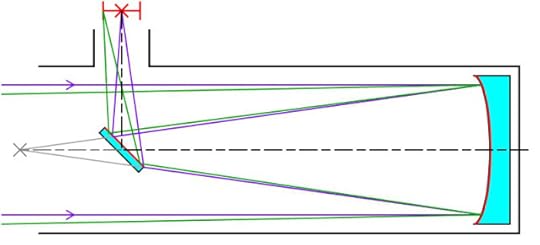
Illustration by Krishnavadela
I really had no idea how to build a telescope, Newtonian or otherwise. I eventually was able to mount the mirror in the tube, but never proceeded further on the project. My mom bought me a small, commercial telescope. I built a mount for it with a neighbor’s help and I went on to enjoy the night sky. I eventually sold that first telescope mirror and tube to a friend who made a nice Newtonian telescope out of it.
Of course, I went on to a career in astronomy and have learned much more about telescopes. So, a couple of weeks ago when my daughter mentioned she was interested in a science fair project where she compared the performance of her refracting telescope to a comparable reflecting telescope, I thought this was a great opportunity to revisit the idea of building a Newtonian telescope.
This time, I deliberately went for a small telescope. I wanted the aperture to be the same size as my daughter’s refractor. 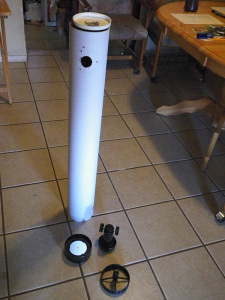 That meant an 80 millimeter primary mirror. I looked on eBay and found an 80mm primary mirror along with a flat diagonal secondary mirror for about $45. I went ahead and picked them up along with a rack and pinion focuser for a Newtonian telescope that cost about $17. I already had eyepieces. If you want to embark on the journey of making a telescope those are easily obtained from places like Orion Telescopes and Binoculars. Once the parts arrived, the only thing I needed to complete the telescope itself was a tube to mount it in. I thought about a couple of approaches, but decided the simplest was to mount the whole thing in a five-inch diameter mailing tube, which I could pick up at the local office supply store for about $7. You can see the complete set of parts to the left.
That meant an 80 millimeter primary mirror. I looked on eBay and found an 80mm primary mirror along with a flat diagonal secondary mirror for about $45. I went ahead and picked them up along with a rack and pinion focuser for a Newtonian telescope that cost about $17. I already had eyepieces. If you want to embark on the journey of making a telescope those are easily obtained from places like Orion Telescopes and Binoculars. Once the parts arrived, the only thing I needed to complete the telescope itself was a tube to mount it in. I thought about a couple of approaches, but decided the simplest was to mount the whole thing in a five-inch diameter mailing tube, which I could pick up at the local office supply store for about $7. You can see the complete set of parts to the left.
I faced two problems when I attempted to build a telescope when I was fourteen. First, I didn’t really have experience with tools. I was trying to figure out how to drill holes and saw boards with no one to really teach me. I’m lucky I didn’t cut off a finger! Second, I didn’t really understand the basics of how far apart to mount the telescope mirrors. The first problem was really the show-stopper all those years ago, because either the Riverside or San Bernardino Amateur Astronomers would have helped me figure out the second part. It turns out, figuring out the distances is perhaps the most important part, but it’s also very easy. You just need a few numbers to start:
The focal length of the primary mirror.
The distance from the center of the mirror to the edge of the tube.
The distance from the edge of the tube to your eyepiece (which you can get by putting the rack and pinion in the middle of its range and measuring the distance.)
When you buy a telescope mirror, the focal length is a number the seller should have. If not, there are assorted websites and YouTube videos that can tell you how to figure it out. 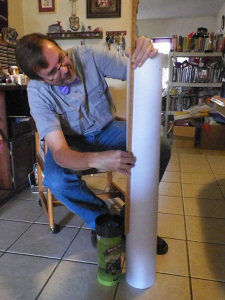 The focal length is the distance between the primary mirror and the place where you’ll form a focused image that you may view with your eyepiece. In essence, the focal length tells you how far apart to mount your primary and secondary mirror. A simple, good-enough way to get get that distance is to take the focal length and subtract the other two numbers above. Make sure the center of your secondary mirror is that far from the primary mirror. I started by making sure the secondary mirror was mounted level in the top of the tube. I drilled my holes with a Dremel tool. I then cut a hole even with the secondary mirror that allowed me to mount the rack-and-pinion focuser. Once that was in place, it was easy to get the measurements. I took it apart, mounted the primary in the right position and then moved on to the final step.
The focal length is the distance between the primary mirror and the place where you’ll form a focused image that you may view with your eyepiece. In essence, the focal length tells you how far apart to mount your primary and secondary mirror. A simple, good-enough way to get get that distance is to take the focal length and subtract the other two numbers above. Make sure the center of your secondary mirror is that far from the primary mirror. I started by making sure the secondary mirror was mounted level in the top of the tube. I drilled my holes with a Dremel tool. I then cut a hole even with the secondary mirror that allowed me to mount the rack-and-pinion focuser. Once that was in place, it was easy to get the measurements. I took it apart, mounted the primary in the right position and then moved on to the final step.
Once everything is mounted, you need to align the mirrors. In short, the primary mirror needs to be aimed straight up the tube, so it sees out. Also, the secondary needs be centered on the primary mirror. Finally, you need to make sure your rack-and-pinion focuser (and thus your eyepiece) is aimed directly at the secondary. Here’s a very good article about how to do just that: http://www.skyandtelescope.com/astronomy-resources/how-to-align-your-newtonian-reflector-telescope/
The thing is, Newtonian telescopes are pretty forgiving. Don’t stress if you don’t get any part of this process perfect. In about 24 hours, of getting all the parts, we were out and looking at the night sky with our homemade telescope. I still need to build a mount, but even lose as it is, it’s a great little telescope for looking at planets or the moon.
By taking me back to one of my first forays into science—and 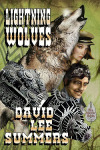 one I didn’t especially succeed at the first time—this project definitely pulled me out of my comfort zone and reminded me of Larissa Crimson’s journey in my steampunk novel Lightning Wolves. If you’d like some inspiration for some mad science, you should check it out at Amazon, Barnes and Noble, or Smashwords.
one I didn’t especially succeed at the first time—this project definitely pulled me out of my comfort zone and reminded me of Larissa Crimson’s journey in my steampunk novel Lightning Wolves. If you’d like some inspiration for some mad science, you should check it out at Amazon, Barnes and Noble, or Smashwords.


October 25, 2014
TusCon 41 Schedule
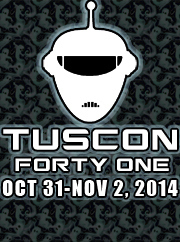 TusCon is Tucson, Arizona’s annual science fiction, fantasy, and horror convention. Normally it’s held about mid-November, but this year it’s coming up early, on Halloween weekend. Once again, I’m honored to be invited as one of the guest authors. The Author Guest of Honor is Janni Lee Simner, the Artist Guest of Honor is Sarah Clemmons, and the Media Guest of Honor is Ernie Reyes, Jr. Here’s a look at my schedule:
TusCon is Tucson, Arizona’s annual science fiction, fantasy, and horror convention. Normally it’s held about mid-November, but this year it’s coming up early, on Halloween weekend. Once again, I’m honored to be invited as one of the guest authors. The Author Guest of Honor is Janni Lee Simner, the Artist Guest of Honor is Sarah Clemmons, and the Media Guest of Honor is Ernie Reyes, Jr. Here’s a look at my schedule:
Friday, October 31
7pm – Ballroom – Mingle with the Guests. This is your chance to learn who’s who at TusCon and chat informally before festivities begin.
9pm – Panel Room 1 – Is It Still TusCon If It’s On Halloween. Normally TusCon happens around my birthday. This year it’s two weeks early. This definitely feels strange to me. Discussing the situation with me are Scott Glener, Bruce Wiley, Carol DePriest, and Curt “Fergie” Booth.
Saturday, November 1
3pm – Panel Room 1 – Has the future become “unknowable”? Was it ever knowable in the first place? I’ll discuss how science and science fiction have changed with Anna Paradox, Cynthia Ward, and Jim Doty.
6pm – Ballroom – Mass Autograph Session Get your wares autographed by any and all of TusCon’s guest authors and artists. If it has mass, I’ll sign it!
Sunday, November 2
11am – Panel Room 1 – Don’t Quit Your Day Job. On this panel, we’ll be discussing the struggles of making a living in this crazy business of science fiction and fantasy writing and storytelling. On the panel with me are Eric Schumacher, Janni Lee Simner, Liz Danforth, and John Vornholt.
1pm – Ballroom – Monsters vs. Megalomaniacs. We’re here to help you figure out how to tell the difference between these two groups. On the panel with me are T.L. Smith, and Paul E. Clinco.
Of course, if you don’t catch up to me in one of these great panels, be sure to stop by the dealer’s room and find the Hadrosaur Productions table where you’ll find many wonderful books, magazines, and anthologies, several of which contain stories and poems by people at TusCon. I look forward to seeing you there!


October 18, 2014
Collimating WIYN
About a week ago, I was assigned the task of collimating the primary mirror on the WIYN 3.5-meter telescope at Kitt Peak National Observatory. Large telescopes like the WIYN work by using large mirrors to collect and focus light from distant stars onto a camera or a spectrograph. When the telescope is disassembled for regular maintenance, the mirrors have to be precisely realigned so that we get the very best possible image quality. Here you see a photo of me with my daughters in front of the WIYN primary and tertiary mirrors.
Although I work with optical telescopes all the time, my specialties are more in the electrical and mechanical aspects of telescopes than with the optics, so this precision job was, to be honest, pretty scary. Sure, I’d helped the site engineer collimate the telescope plenty of times, but this time he left me with a set of instructions and went off to bed. I did my best, followed the instructions and everything seemed to go well. It was especially gratifying over the next three nights when the visiting astronomers reported getting half-arcsecond images. What that means is that stars subtended no more than half a second of arc on the sky, which is pretty tiny. That also means we’re minimizing the blurring one would expect to see from the atmosphere. I have to say, it’s the kind of thing that makes me feel pretty good.
The whole idea of characters being challenged to do new things they didn’t think they could do is an important part of my fiction. Recently, in Lightning Wolves, Larissa Crimson is challenged to find a way to make a set of unwieldy lightning guns portable enough to be practical in combat. She’s not sure if she has the skills necessary to do the job, but she gives it a shot and finds a solution.
WIYN’s newest instrument is a camera called the One-Degree Imager. It’s a camera that takes pictures of a large swath of the sky at high resolution, which means you can see things at great detail. If the telescope mirrors are misaligned, the camera cannot take pictures with the kind of detail it was designed for. So, the litmus test for the alignment exercise came this past Monday, when an observer took images of globular clusters with the One-Degree Imager. She also reported half-arcsec images, much like in the photo below. This photo, by the way, was taken with WIYN, but with the old mini-Mosaic camera before the One-Degree Imager was implemented.
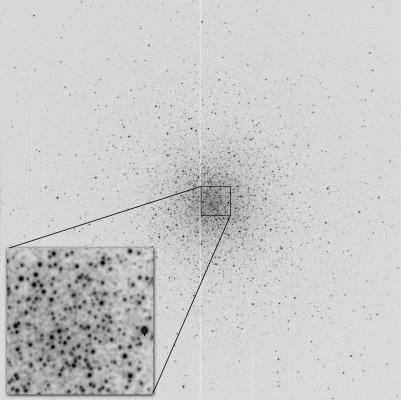
A.Saha (NOAO)/WIYN/NOAO/NSF
Globular clusters such as the one shown above, are immense balls of ancient stars that orbit our galaxy. As it turns out, they feature prominently in my Old Star/New Earth series. Those novels are:
The Pirates of Sufiro
Children of the Old Stars
Heirs of the New Earth
The ebook of the first novel is free. The paperback editions feature wonderful illustrations by Laura Givens. So, why don’t you start an epic voyage to the stars today!


October 11, 2014
Mind Your Manners
In recent weeks, my wife and I have been fielding questions from our daughters about the behavior of boys. Without getting too specific and to minimize embarrassment, I’ll just say that it’s reminded me that “boys will be boys” is a phrase that leaves a bad taste in my mouth. It also made me realize that a part of me would have liked to have had a son, just to show that it’s possible for boys to be raised as gentlemen.
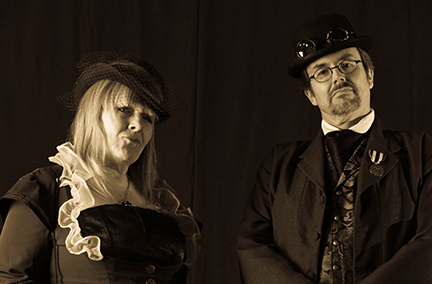
My friend, Loretta, and I are here to remind you to mind your manners.
As my wife and I approach our twenty-fifth wedding anniversary, one question I get frequently is, “How have you made your marriage last?” I actually find myself pointing to a quote by Robert A. Heinlein’s character, Lazarus Long: “Formal courtesy between husband and wife is even more important than it is between strangers.” In short, we do our best to always say “please” and “thank you” and try not to interrupt each other. We try to remember to check with each other when making plans. We don’t always succeed. Sometimes we hurt each others’ feelings, but the fact that we try and even succeed much of the time has made for a relationship that has lasted for many years.
To me, manners are less about Emily Post and more about remembering to respect the other party in a relationship—whether it be personal, casual, or business. Really, I could care less what side of my plate the forks are as long as you respect my feelings. In turn, I’ll do my best to respect yours. My wife and I have done our best to convey that lesson to our daughters and encourage them to seek out companions that respect them in turn.
At one point, I was on a convention panel that discussed whether the appeal of Steampunk was a desire to return to an era of more formal manners. I think there is something to that as far as the appeal of Steampunk to me. If you follow me here and on social media, you’ll find that I don’t speak a lot about politics. Part of that has to do with a tendency of people to forget their manners, especially when discussing politics and social issues on line. Rather than disagreeing and giving reasons for their opinions, they’d rather call the person they disagree with an idiot.
In the novel Friday, Robert A. Heinlein writes: “A dying culture invariably exhibits personal rudeness. Bad manners. Lack of consideration for others in minor matters. A loss of politeness, of gentle manners, is more significant than is a riot.” Whether you agree with this sentiment or not, I certainly find the lack of common courtesy in some on-line discussions discourages discussion of many issues for me. Certainly in this case, a loss of gentle manners becomes a way of shutting down political discussion, which of course, is utterly detrimental to our society. I hope this is an issue that will rectify itself with time. In the meantime, if you want to discuss politics with me, I’ll be happy to do so in person. I find people, for the most part, are still more polite when they have to look you in the eye.
As you can probably imagine from the quotes I’ve presented, Robert A. Heinlein has long been an influence on me and my writing. I think that’s most apparent in my Old Star/New Earth series and its first novel, The Pirates of Sufiro. The novel is free from my publisher Lachesis Publishing. Won’t you please give it a try?


October 4, 2014
Different Dragons II
Wolfsinger Publishing has just released the anthology Different Dragons II, which includes my short story “The Dragon’s Keepers.” Here’s the description of the book.
What happens when dragons are dropped unexpectedly on your front door step from a company you’ve never heard of? In China, a dragon comes up with a unique solution on what to do with all those maidens! 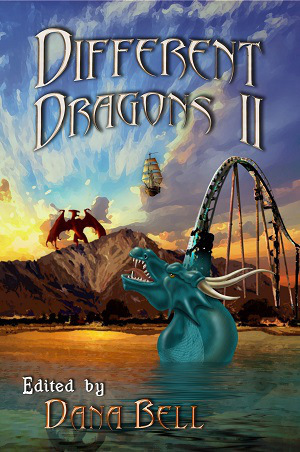 An amusement park is hounded by a sea monster the Indians had been feeding for centuries. Haunted by a ghostly dragon, a young woman flees across the snow wilderness, terrified her slaughter of the beasts means her own death. A family is murdered in the Middle East, and a dragon promises a young girl vengeance for their deaths. Are there dragons on a spaceship? You bet! Not to mention an usual dragon ride one pilot will never forget! And let’s not forget, how dragons can appear to be something they’re not, when protecting themselves or their family, from hidden magical dangers. These and other tales await within these pages of Different Dragons II.
An amusement park is hounded by a sea monster the Indians had been feeding for centuries. Haunted by a ghostly dragon, a young woman flees across the snow wilderness, terrified her slaughter of the beasts means her own death. A family is murdered in the Middle East, and a dragon promises a young girl vengeance for their deaths. Are there dragons on a spaceship? You bet! Not to mention an usual dragon ride one pilot will never forget! And let’s not forget, how dragons can appear to be something they’re not, when protecting themselves or their family, from hidden magical dangers. These and other tales await within these pages of Different Dragons II.
In my short story “The Slayers,” I imagined a world where airship crews hunted dragons for the fuel that allows them to breathe fire. In “The Dragon’s Keepers,” I imagine that an airship captain of this world has come to realize dragons are intelligent and must be preserved. He has joined the fight to prevent the wanton destruction of dragons. With the help of a wizard’s daughter, he must find a way to stop a ritual dragon slaying.
Here’s the complete table of contents for the anthology:
“Introduction: These are the Tales” by Dana Bell
“The Dragon’s Keepers” by David Lee Summers
“The Stalker” by Lynn Donovan
“Such is the Jungle” by Quincy Allen
“Changling” by Rebecca McFarland Kyle
“Suntosun Shipping” by G.L. Francis
“Of the Generation” by Therese Arkenberg
“Dot’s Lunch – The Watchers along the Line” by Dave With
“His Lucky Color is Gold” by Rebecca Leo
“Hargmir, Ghost of Dragons” by David Turnbull
“Space Wings” by H.A. Titus
“Asim’s Gift” by Kathryn S. Renta
“Mr. Long’s School for Girls” by Rob S. Rice
“Bessie Returns” by Christine Hardy
“Amélie’s Guardian” by Bryan Thomas Schmidt
Different Dragons II is available at Amazon.com and Smashwords. What’s more, if you buy the book from Smashwords enter the code ED26N on checkout for a 25% discount as long as you visit before October 15. If you’d like to go back and read my other story set in this fantasy world, “The Slayers” is available as a stand-alone short story at Amazon.com and Smashwords.
Finally, as a reminder to those friends in Las Cruces, I am signing books today from 10am until noon at COAS Books Downtown. I hope you’ll drop in and say “hi!”


September 27, 2014
Schedule Cadence
Autumn has arrived, which means my working nights at Kitt Peak National Observatory will start getting longer until we reach the winter solstice just before Christmas. Autumn also heralds several other changes. Among them, I have a new supervisor and the National Science Foundation is no longer providing operational support for the 2.1-meter telescope. One upshot is that I’ve been looking at my schedule cadence with my co-workers. Here’s what that cadence looks like:
Basically, my shifts at the observatory follow a fifteen day cycle. There are three “Available” or “on-call” days. I don’t work all of those, and most of the time I’ve been on call to help astronomers start their observing runs at the 2.1-meter telescope. Then I work at the WIYN 3.5-meter telescope for three nights. After that I work at the Mayall 4-meter telescope for three nights, then I get six nights off, and the whole thing starts all over again. Because it’s fifteen days, my schedule drifts through the work week. If one cycle starts on Sunday, the next one will start on a Monday, and the one after that a Tuesday.
Right now, it doesn’t look very likely this cadence will change much. Perhaps the only change is that instead of supporting the 2.1-meter, I may be set up to work from home periodically on the never-ending task of telescope and instrumentation documentation. The reason it’s never ending is that we’re routinely getting new instrumentation and to keep the telescopes cutting edge, they are often modified and upgraded.
Of course, between writing, editing and astronomy, I don’t really get many days off. I get to go home and shift gears. This upcoming break is pretty exciting though. I’ll be shipping out volume 10, issue 1 of Tales of the Talisman Magazine to subscribers and contributors. Although we’re taking a break after this year, we’re not letting up on quality. This is our tenth year and we want to make it a special one!
As a reminder, there are only four more days on the Lachesis Publishing Anniversary sale. All ebooks are half price. This would be a great time to try my science fiction novel, The Solar Sea, which tells the story of the first solar sail voyage to the outer planets. My novel Dragon’s Fall: Rise of the Scarlet Order, which tells how a group of vampires came together to form a team of mercenaries in the middle ages is also on sale.
Finally, on Saturday, October 4, I will be signing copies of Owl Dance, Lightning Wolves, Vampires of the Scarlet Order, and Dragon’s Fall: Rise of the Scarlet Order at COAS Books Downtown in Las Cruces, New Mexico from 10am until noon. If you’re in town, I hope you’ll drop by!



